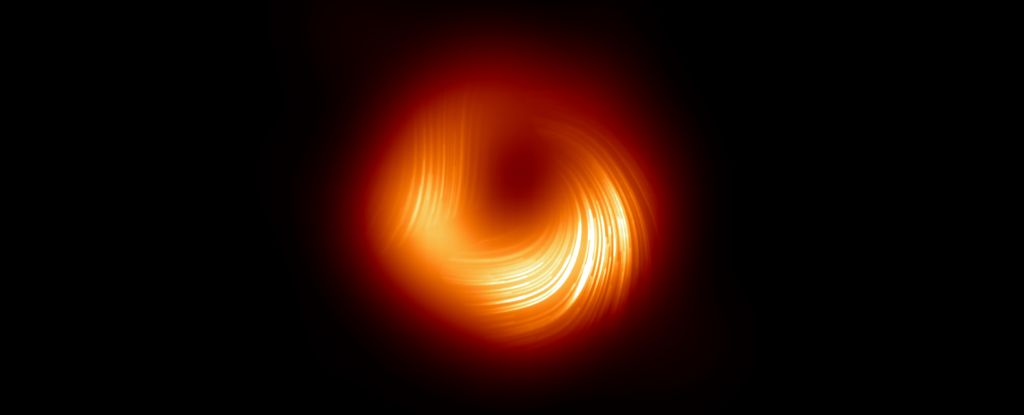
Observations of the supermassive black hole known as M87* have revealed remarkable changes in its magnetic field, marking a first in astronomical research. Using data collected by the Event Horizon Telescope during observations in 2017, 2018, and 2021, scientists discovered that while the black hole itself remains stable, the environment surrounding it showcases dynamic fluctuations in its magnetic field.
Researchers mapped variations in the polarization of M87*’s magnetic field, demonstrating that it completely reversed direction over the observed period. This phenomenon highlights the complex cosmic weather occurring just outside the black hole’s event horizon, providing valuable insights into how such colossal entities consume matter and generate powerful jets that extend into intergalactic space.
M87*, located approximately 55 million light-years from Earth, has a mass roughly 6.5 billion times that of the Sun. Since the release of its first iconic image in 2019, the black hole has become a focal point of study for the Event Horizon collaboration. Continuous observations have allowed scientists to track changes in the mass of hot material swirling around its edge, including the most detailed views of the jet-launching region at the poles of an active black hole.
“Jets like the one in M87 play a key role in shaping the evolution of their host galaxies,” stated Eduardo Ro, an astronomer at the Max Planck Institute for Radioastronomy in Germany. “By regulating star formation and distributing energy across vast distances, they significantly affect the life cycle of matter on cosmic scales.”
The mechanics behind a black hole’s jets involve the interaction of its magnetic field with surrounding material. As matter orbits the black hole, it forms a disk around its equator. Not all material is drawn into the black hole; some is redirected along magnetic field lines, accelerating toward the poles and launching into space at speeds nearing that of light. These jets can extend millions of light-years beyond their origin.
To analyze the formation of these jets, the Event Horizon Telescope team captured a series of images of M87* over multiple years, focusing particularly on the polarization of light emitted in the magnetized environment. The analysis revealed that although the overall appearance of M87* remained consistent, significant variations in polarization indicated dynamic changes.
In 2017, the magnetic fields appeared to spiral clockwise. By 2018, they shifted to an anti-clockwise direction and stabilized, only to return to an anti-clockwise pattern by 2021. This ongoing fluctuation suggests that the magnetic environment around M87* is far from static, challenging existing theoretical models.
“What’s remarkable is that while the ring size has remained consistent over the years—confirming the black hole’s shadow predicted by Einstein’s theory—the polarization pattern changes significantly,” commented Paul Tiede of the Harvard & Smithsonian Center for Astrophysics. “This tells us that the magnetized plasma swirling near the event horizon is dynamic and complex.”
These new findings reveal a turbulent environment surrounding M87*, illustrating how its magnetic fields guide the flow of material, directing some beyond the event horizon and expelling others as massive jets. The implications of these discoveries are profound, and future observations aim to deepen this understanding.
Anticipating further breakthroughs, the Event Horizon Telescope is preparing for a series of rapid observations scheduled for March and April 2026. “We are excited to be gearing up to capture the first movie of M87*, something that has been on our wish list ever since that first image of a black hole,” said Remo Tilanus from the University of Arizona’s Steward Observatory.
The research findings have been published in the journal Astronomy & Astrophysics, contributing to the expanding knowledge of black hole astrophysics.






